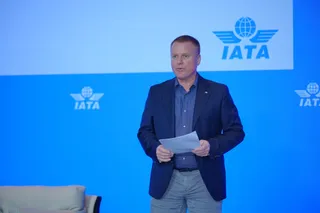CAT Leader Forum: the ‘HoT’ Issues Facing European Aviation Training
Contact Our Team
For more information about how Halldale can add value to your marketing and promotional campaigns or to discuss event exhibitor and sponsorship opportunities, contact our team to find out more
The Americas -
holly.foster@halldale.com
Rest of World -
jeremy@halldale.com

The CAT Leader Forum emerged from an annual Heads of Training (HoT) meeting which Halldale typically conducts with EASA at the European Airline Training Symposium – EATS. (This year’s EATS will be 2-3 November in Berlin – www.eats-event.com
As there was no live EATS in 2020 because of pandemic restrictions, EASA and Halldale agreed to conduct a virtual HoT meeting. From that meeting in February emerged five “HoT” topics facing the airline training community in Europe which warranted deeper discussion.
Led by Capt. Jacques Drappier, JDR Consult, former Vice President of Flight Operations and Training Services for Airbus, and Chair of EATS, Halldale conducted intensive workshops with about a dozen leading subject experts on each of the five topics. Assisting Capt. Drappier in the series are Allyson Kukel and Rick Adams. The workshops were followed by public webinars to present the findings.
Based on the positive feedback received and expecting these topics to be ongoing issues in the airline training community, Halldale plans to continue the workshop/webinar approach with these and other topics, including extending discussions beyond Europe, specific to the needs of other regions and leveraging the expertise of regional subject experts.
The CAT Leader Forum webinars and full written reports can be found on the Halldale website: https://www.halldale.com/topics/139-performance-improvement
These are highlights of the conclusions and recommendations:
HoT Issue #1 – Skills Decay
- The pandemic's negative results on crews' overall skills are not limited to the technical (handling) skills but to the crewmembers' broad competencies, including, and primarily, the non-technical skills.
- The decay of competencies will significantly depend on the starting point. The solutions to mitigate will be different for different pilot groups, cultures, experiences, and individuals.
- Operators must avoid overloading pilots that have been away from flying for an extended period.
- In operations, keep the tasks simple, give crews more time to prepare, avoid pressure on time or fuel.
- Include the environment in the mitigating actions. Talk to ATC, include ground handling in the discussions. Short-cuts may lead to unstable approaches.
- In re-training after a long absence, start with routine line flights in the simulator. Try to adapt the training to the needs of the individual. Ask them what they feel is necessary for them.
- When pilots are not flying, they need to be kept in contact with the company. It is important to feel part of it still. Webinars, free sim sessions, observer flights can all help.
- Regulations were based on "normal," not on this situation. Waivers have been given based on assumptions last year. Evidence is now pointing at other issues so regulators need to adapt.
HoT Issue #2 – XR/VR/AR Technology Emergence
- XR technology is getting better and getting better faster.
- Regulations are being adapted to make this technology available for training in the overall toolbox.
- Benefits can be cost or better quality.
- The industry providing the tools must be aware of the consequences of poor quality in aviation training and realise this is not a game.
- Human Factors is the key to a successful implementation.
- The use of XR technology requires a complete rethink of our training philosophy and curricula.
HoT Issue #3 – Evidence-Based Training (EBT)/Competency-Based Training & Assessment (CBTA)
- There are only a small number of airlines globally that have reached a mature point in implementing EBT. Those report a significant improvement in training effectiveness. Pilots feel good about the training as the training focuses not on events but on their competencies. They come out more confident. It is an upward spiral that will get pilots better prepared for the daily challenges and, in the end, improve safety.
- Implementing EBT is a serious project. It takes time, effort, and money, but in the end, it is worth it. An operator must understand it will take at least 18 months to get to initial operational status and up to 3 to 5 years to have a mature programme, and it could come with significant hurdles.
- The key to success is planning. Do not rush into it. Plan, get help, talk to all stakeholders: especially the pilots and regulators. Then start with a baseline programme and move forward with small steps.
- The most critical element is the instructor. The whole concept gravitates around the ability of the instructor to observe, assess, determine root cause, and facilitate improvement. These competencies cannot be learned overnight and will need continued additional training, briefing and evaluation.
- New technology can be helpful if it allows performing the task in a better way. Do not use technology just because it is available, but because it will enable a better outcome.
- The pilots are the customers of EBT. We want the pilots to be empowered to take control of their training as we advance, and we need to get their buy-in. The outcome must be a pilot group that is more confident, better prepared, and more resilient to manage the operational challenges on the line.
HoT Issue #4 – Big Data
- Big Data is a valuable tool in the development of improved training methodology.
- There is a need for standardisation in the collection of data to allow data exchange to happen: the data should be readable and comparable across the industry.
- Instructor training standardisation is one of the most essential items, as they are the prime creators of the data for the inner loop.
- Data Analysis is a science and should be done with care. It requires both “data-educated” pilots and data scientists to do the analysis.
- There are many pitfalls and traps when making decisions based on data, and progress should be made with care.
HoT Issue #5 – Upset Prevention and Recovery Training (UPRT)
- Develop and distribute good academic content and get this to all pilots worldwide. Knowledge and understanding are the first steps.
- Start by training the instructors as pilots in UPRT. Make sure they understand and are in line with the training philosophy.
- Give the instructors thorough training to be UPRT instructors.
- Keep the instructors up to date and standardised: this is vital for safety.
- Implement the training for the pilots in the correct sequence and avoid at all times negative training.
- While prevention is the primary goal, recognition and recovery must also be considered, as prevention cannot be guaranteed.

.png/r%5Bwidth%5D=320/7f2021f0-9a0d-11f0-b8f7-272ce5993c28-nano-banana-2025-09-24T11-07-03%20(1).webp)
